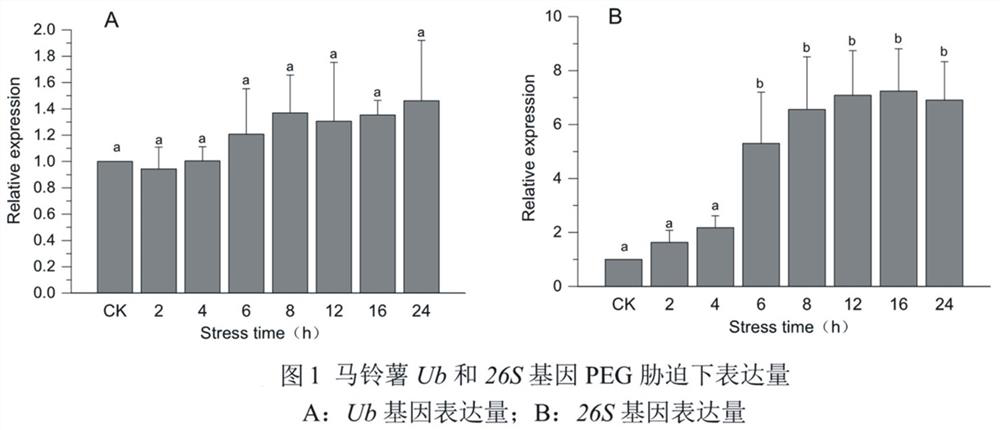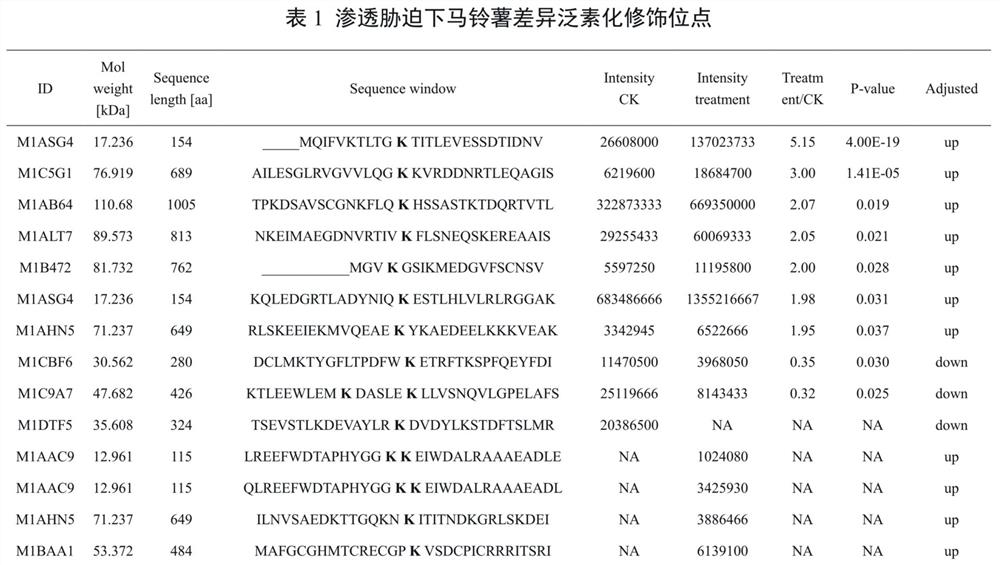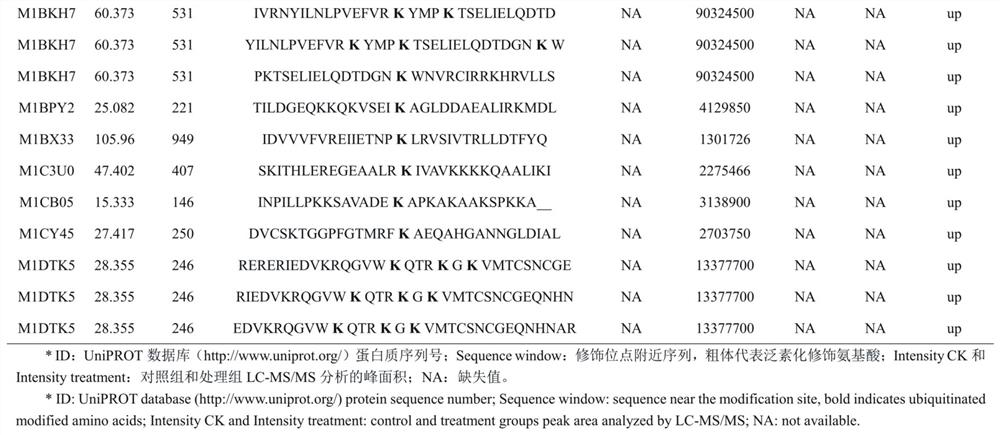Osmotic stress ubiquitination modified protein screening method
A technique for ubiquitination modification and osmotic stress, which is applied in the field of screening ubiquitination modified proteins under potato osmotic stress, and can solve problems such as screening methods for ubiquitination modification proteins that have not been seen
- Summary
- Abstract
- Description
- Claims
- Application Information
AI Technical Summary
Problems solved by technology
Method used
Image
Examples
Embodiment 1
[0013] A method for screening ubiquitination-modified proteins under potato osmotic stress, specifically comprising the following steps:
[0014] 1. Breeding and grouping of shoot tip virus-free tissue culture seedlings and stress treatment
[0015] The tubers of potato cultivar "Atlantic" were taken out from the cold storage, and kept in the dark at room temperature for 30 days to germinate. When the potato sprouts grow to 2 cm, wash the sprouts with sterile water for 10 min, transfer them to a sterile Erlenmeyer flask, and use 0.1% HgCl 2 Sterilize for 1 min, transfer to a new sterile Erlenmeyer flask, sterilize with 75% ethanol for 5 min, then transfer to a new sterile Erlenmeyer flask, sterilize with 0.05% NaClO for 15 min, rinse with sterile water 3 times , and finally cut off the bottom of the buds with sterilized scissors, transferred to solid MS medium, and cultured at 20°C under light (2000 lx, 16 h / d) for 20 days. When the buds differentiated into seedlings for the...
Embodiment 2
[0048] This example provides a method for extracting plant total RNA, which is operated according to the instructions of the TIANGEN plasmid mini-extraction kit (with deletions and modifications). The specific steps are as follows:
[0049] 1. Soak round-bottom centrifuge tubes, tweezers, scissors, pipette tips, grinding rods and other utensils in 0.1% DEPC solution for 24 hours, take them out, put them in a plastic box, wrap them in newspaper, and place them in an autoclave at 120°C for 30 minutes Sterilize twice, ventilate and dry in an ultra-clean bench, and set aside.
[0050] 2. Take about 200 mg of plant tissue and place it in a round-bottomed centrifuge tube. The outer wall of the round-bottomed centrifuge tube is immersed in liquid nitrogen to freeze (to avoid contamination caused by liquid nitrogen entering the centrifuge tube). Use a grinding rod to grind until the sample is powdery. The bottom centrifuge tube was continuously extended into liquid nitrogen for freezi...
PUM
 Login to View More
Login to View More Abstract
Description
Claims
Application Information
 Login to View More
Login to View More - R&D
- Intellectual Property
- Life Sciences
- Materials
- Tech Scout
- Unparalleled Data Quality
- Higher Quality Content
- 60% Fewer Hallucinations
Browse by: Latest US Patents, China's latest patents, Technical Efficacy Thesaurus, Application Domain, Technology Topic, Popular Technical Reports.
© 2025 PatSnap. All rights reserved.Legal|Privacy policy|Modern Slavery Act Transparency Statement|Sitemap|About US| Contact US: help@patsnap.com



